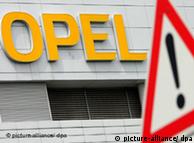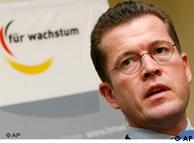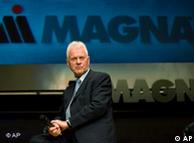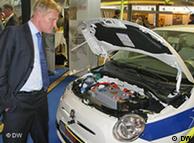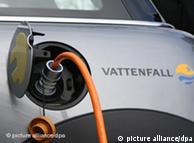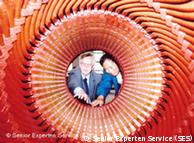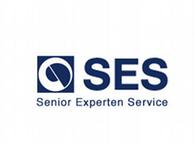Hey, PC, Who Taught You to Fight Back?
SEAN SILER would never be mistaken for a movie star. A former Navy officer who wears glasses and is a tad on the heavy side, Mr. Siler works at Microsoft, where he oversees the Windows division’s adoption of new Internet connectivity software called IPv6.
Multimedia

A Microsoft ad featured Lauren, who was shopping on a budget and decided not to spring for a $1,000 MacBook.
But there were audible gasps last summer when Mr. Siler, 39, auditioned for Microsoft’s new ad campaign for Windows, created by Crispin Porter & Bogusky, the Miami agency best known for its cheeky work for Mini Cooper and Burger King.
“I was like, ‘Are you kidding?’ ” recalls Rob Reilly, one of the agency’s executive creative directors. “It couldn’t have been more perfect.”
Everybody agreed that Mr. Siler looked exactly like PC, the character played by the comedian John Hodgman in Apple’s popular “Get a Mac” ads that lampoon Windows-based computers and those who love them. Two weeks later, Mr. Siler reported to a nearby television studio. The agency dressed him in PC’s dorky uniform — white shirt, baggy khakis, brown sport coat and matching brown tie — and handed him a script with the lines: “I’m a PC. And I’ve been made into a stereotype.”
Mr. Siler joined a parade of environmentalists, budget-conscious laptop shoppers, mixed martial arts fighters, mash-up DJs and remarkably tech-savvy preschoolers who appear in Microsoft’s new campaign, which is intended to show that real Windows users aren’t all clueless drones.
For Mr. Siler, the experience was almost like being a geeky incarnation of Brad Pitt. His e-mail address was on the screen, and he received 4,000 messages from viewers — some from grateful parents whose children had wanted expensive Macs over PCs and now had second thoughts.
Crispin put up a video on YouTube in which Mr. Siler discussed his role in the campaign; it was viewed more than 702,000 times. At work, he was constantly interrupted by his fellow Microsoft employees. “For a couple of weeks,” Mr. Siler recalls, “I had people coming by my office and saying: ‘Hey, you are the PC guy, aren’t you? That’s so cool!’ ”
His mother wasn’t so sure. “You look so horrible,” she told him. “You don’t look anything like that man. Why did they make you look so bad?”
Somebody better explain to Mr. Siler’s mother that this isn’t a beauty contest; it’s an ad war, one destined to go down in history with the cola wars of the 1980s and ’90s and the Hertz-Avis feud of the 1960s. According to TNS Media Intelligence, Apple spent $264 million on television ads last year, 71 percent more than Microsoft. In the first six months of 2009, however, Microsoft responded with $163 million worth of commercials, more than twice Apple’s spending.
Surprisingly, Microsoft, which has never been known for running cool ads, has landed some punches. Shortly after the Microsoft campaign started, Apple unleashed commercials that mocked its competitor as spending money on advertising when it should have been fixing Vista, its much-maligned operating system.
“It got Apple’s attention, didn’t it?” says Robert X. Cringely, host of PBS’s NerdTV.
FOR years, Microsoft was the stodgy market leader. It sold 90 percent of the world’s operating system software, and generally left the advertising to Dell, H.P. and other hardware makers who licensed Windows. The only time Microsoft hawked its most recognizable brand on television was when the latest version of the software hit the shelves. Then the company flooded the airwaves with commercials full of loud music and swirling imagery saying that the new version of Windows is out — and that it’s awesome!
Apple is the classic smaller insurgent. Its share for desktops and laptops in the United States is just over 8 percent. Every time Apple grabs another point of market share from Microsoft’s partners, its stock price climbs. And one way that Apple has tried to gain share is by running clever ads that ridicule everything Microsoft stands for.
There’s no better example than “Get a Mac,” unveiled three years ago by Apple’s longtime ad agency, TBWA/Chiat/Day. No technology company would choose Mr. Hodgman’s character, PC, to personify its brand. He reeks of the past. He boasts of using his desktop to make spreadsheets and ridicules his more youthful friend, Mac, played by the actor Justin Long, for using his desktop for “juvenile” pursuits like blogging and movie making — even through it’s clear that PC would like to be in on the fun. He just can’t get his Windows computer to do his bidding.
Like a classic sitcom character — think Ralph Kramden of “The Honeymooners” — PC is always dreaming up ill-advised schemes intended to show his superiority. He’s thwarted by viruses, system crashes and other problems more associated with Windows-based computers than Apple’s products — and, recently, he has become a hapless apologist for Vista. Mr. Long’s character smugly watches his friend’s pratfalls, glancing at the audience with raised eyebrows as if to say, “If only this poor guy would buy a Mac. . . .”
PC will never learn. Not as long as he keeps driving sales for Apple. Since 2006, the year that he first appeared in all his pasty-faced glory, Apple’s share of the computer desktop market in the United States has more than doubled, according to IDC, the technology industry research firm. Its stock price, meanwhile, has risen 142 percent since May 2006, while Microsoft’s has barely budged. Yes, the astonishing success of newer Apple products like the iPod and the iPhone has helped. But the PC character should also take a bow. (Representatives of Apple and TBWA/Chiat/Day declined to be interviewed for this article.)
Apple’s ads put Microsoft in a bind. One of Madison Avenue’s rules is that a market leader never acknowledges a smaller competitor in its advertising. What’s more, if Microsoft responded with ads that backfired, it would look just like Mr. Hodgman’s character. Maybe it was better to grin and bear it.
Then, last year, Microsoft hired Crispin Porter and struck back with uncharacteristic wit. There was Mr. Siler’s star turn. The agency also handed bunches of cash to shoppers and asked them to choose between a PC and a Mac. Lauren, a 20-something in one of the “Laptop Hunter” spots, is giddy about the money she has left over when she selects a $699 H.P. with a 17-inch screen, rather than a $1,000 Mac with a 13-inch screen. “I guess I’m just not cool enough to be a Mac person,” she sighs. This time, the joke was on Apple. In a recession, it’s pretty hip to save $300.
Microsoft’s effort to inspire PC pride seemed to resonate after its debut last September. According to IDC, Mac shipments in the United States plummeted 20 percent in the fourth quarter of 2008 versus the previous quarter, as the economy went into a tailspin, while those of PCs manufactured by Dell and H.P. fell only 13 percent and 3 percent, respectively.
Microsoft was quick to declare victory — maybe too quick. In the second quarter this year, Mac sales in the United States rebounded 34 percent, IDC said, while Dell and H.P. had more modest gains. Even more humbling for Microsoft was the company’s announcement in late July that its year-over-year operating income for the quarter declined 29 percent.
As a result, some analysts have argued that the Microsoft campaign has failed. But they, too, may be too hasty. We are only weeks away from the Oct. 22 release of Windows 7, which may undo much of the company’s self-inflicted damage from Vista. PC users, many of whom skipped buying Vista machines, could be holding off until then to buy. And the introduction of Windows 7 will be accompanied by yet another Crispin Porter ad blitz.
“You are not so embarrassed to take your PC out of the bag on a plane anymore,” said Mr. Reilly at the ad agency. “It’s actually kind of cool that you do. I know this is working.”
EVERY Wednesday, Lee Clow, the creative director of TBWA/Chiat/Day, travels from Los Angeles to Cupertino, Calif., for his weekly meeting with Steven P. Jobs, the Apple chief executive. They started doing this years ago and have created ads that are as stylish and cool as anything on television. Usually, the subtext of these ads is that Microsoft is the Evil Empire.
Mr. Jobs started working with Mr. Clow, a laid-back former surfer dude, in the early 1980s when Mr. Clow helped to create Apple’s path-breaking “1984” television commercial introducing the Macintosh. The ad’s unsubtle message was that buyers of the new machine would be striking against I.B.M., portrayed as Apple’s Orwellian foe.
Mr. Jobs struggled to persuade Apple’s board to run the ad, which was directed by Ridley Scott. Mr. Clow was similarly adamant when his boss, the late Jay Chiat, tried to shelve it. The ad ran only once, during the 1984 Super Bowl, but it has never been forgotten.
Apple forced out Mr. Jobs the next year and hired a new ad agency, BBDO. But when Mr. Jobs returned triumphantly to the company in 1997, he reunited with TBWA/Chiat/Day. Mr. Clow brought him the idea for “Think Different,” a campaign that identified Apple with figures like Bob Dylan, Albert Einstein and Martin Luther King Jr. Mr. Jobs used it to introduce the iMac and to re-establish Apple as an iconoclast.
TBWA/Chiat/Day went on to create the 2002 “Switchers” campaign, in which the director Errol Morris filmed real computer users describing why they ditched their PCs for a Mac. Who can forget Ellen Feiss, the slow-talking teenager who made the hearts of young geeks flutter when she explained how her PC ate her homework? “It was, like, beep beep beep beep beep beep beep,” Ms. Feiss says. “And then, like, half of my paper was gone.”
Then came the iPod ads from TWBA/Chiat/Day that not only helped drive sales of Apple’s breakout product, but also made stars of little-known indie rock acts like Feist. Such is the power of Apple’s marketing wizardry.
Many of Apple’s new customers were plugging their iPods into PCs. Mr. Clow proposed “Get a Mac” to get them thinking about springing for an Apple machine. Mr. Jobs was intrigued. But he wanted the ads to be perfect.
“The discussion within Apple was: ‘Is this the right tone? How young a guy should Mac be? How dorky do we make PC look?’ ” recalls Ken Segall, a former TBWA/Chiat/Day creative director who worked early on as a consultant for Apple on the campaign. “It went many rounds before Steve was comfortable with the idea. Then he loved it.”
IN spring 2007, a year after Apple introduced the “Get a Mac” ads, Steve Ballmer, the Microsoft C.E.O., barged into the office of Mich Mathews, head of the company’s central marketing group. The two had talked about a campaign that would repair the damage from the Apple ads.
Ms. Mathews recalls Mr. Ballmer enthusiastically asking her, “When are we going to move?”
Advertising has never seemed to be part of Microsoft’s DNA. The chairman, Bill Gates, “never really seemed to get marketing,” says Rob Enderle, a longtime technology industry analyst. And for many years, Mr. Enderle says, Mr. Ballmer “just didn’t think it was worth spending the money on it.”
The company’s Windows campaigns seemed to reflect executives’ lack of interest. Perhaps the best example was the push for Microsoft Vista in 2007, created by McCann Erickson with the slogan “The Wow Starts Now.” It showed people gaping in childlike wonder at the newest version of Windows. But Vista, to put it mildly, didn’t live up to the ads.
“The operating system was visually beautiful,” said Jeff Musser, a former McCann Erickson creative director who worked on the campaign. “But it was a bad product. I didn’t really hear anybody saying, ‘Wow.’ ”
There were also cultural issues at Microsoft when it came to advertising. On Madison Avenue, they say that the more hands that touch an advertisement, the worse it becomes. Microsoft felt differently. “They thought the more people saw it and gave an opinion, the better it would be,” Mr. Musser said. “That’s how you develop software. It’s not how you develop great creative.”
So Ms. Mathews tried to change things. She set up a nine-member task force to figure out a marketing strategy and keep meddlers at arm’s length.
In February 2008, Microsoft picked Crispin Porter. At the agency, Mr. Reilly was initially apprehensive. He didn’t even own a PC; he had an ultraslim MacBook Air. (He has since bought himself two PCs — a Sony Vaio and a Lenovo ThinkPad.)
The adman also wondered whether Microsoft was ready for a Crispin campaign. Mr. Reilly himself oversees the agency’s irreverent work for Burger King, aimed at young men hungering for menu items like the Triple Whopper.
He wanted to come up with a campaign that would redefine Windows, and he counseled against ads that attacked Apple. Then he changed his tune. Last summer in Apple ads, Mr. Hodgman’s PC character morphed into a personification of Microsoft itself. PC was haunted by problems with Vista. He took up yoga to calm his nerves, only to discover that his teacher was on edge because Vista wreaked havoc on her billing system. PC tried to find peace by creating a line of herbal teas with names like “Crashy-Time Camomile” and “Raspberry Restart.”
“As the tone of their campaign became more and more negative, we were like, ‘We gotta do something,’ ” Mr. Reilly said. “That’s where the whole notion of ‘I’m a PC’ and putting a face on our users came about. We have a billion users. That’s who our cast is, whereas Apple is just two fictitious characters.”
Microsoft recruited influential Windows fans like the “Desperate Housewives” star Eva Longoria. “I feel bad about the little PC guy,” she said this month. “He is always getting beaten up.” It also brought in some who would appeal to niche audiences, like the Pittsburgh mash-up D.J. Gregg Gillis, who is better known as Girl Talk.
When Mr. Ballmer finally saw the ads in September, he congratulated Ms. Mathews and gave her a high-five. Then, Ms. Mathews says, he started shouting, “I’m a PC!”
THE new Windows campaign got off to an inauspicious start. Puzzling ads featuring Mr. Gates kidding around with the comedian Jerry Seinfeld left a lot of people scratching their heads. The ads quickly disappeared.
As the “I’m a PC” ads with Mr. Siler replaced them two weeks later, Apple’s “Get a Mac” spots disappeared. Microsoft doesn’t think that was a coincidence. When PC and Mac reappeared, it was in the advertising that criticized Microsoft as spending on ads rather than on Vista.
Microsoft thought that it had scored a point. “You’ve got to look at that and say, ‘You are not advertising to consumers; you’re advertising to the Microsoft marketing department,’ ” Ms. Mathews says. “I just admit that did bring a smile to my face.”
Emboldened, Microsoft continued its barrages. In February, it unveiled its “Rookies” ads, arguing that PCs are so easy to use that even Kylie, an adorable 4 1/2-year old, could upload a picture of her goldfish, Dorothy, onto her PC and e-mail it to her relatives. You want to make fun of Kylie, Apple? Microsoft and Crispin dare you to try it.
The next month, Microsoft deployed its “Laptop Hunters” ads. They clearly moved the needle in Microsoft’s favor. Ted Marzilli, a managing director of BrandIndex, a company that tracks consumer perceptions, said that at the beginning of the year, adults thought Apple offered more value than Microsoft. In May, however, Microsoft closed the gap in the firm’s surveys. “Apple took a hit,” Mr. Marzilli said. “Since then, they have been neck and neck.”
In June, Microsoft felt that it had more reason to gloat. The chief operating officer, B. Kevin Turner, says he got a call from an Apple lawyer who asked him to change the ads because Apple was lowering its prices by $100. “I did cartwheels down the hallway,” Mr. Turner subsequently boasted in speech at a New Orleans conference.
Then Apple announced its second-quarter rebound. And for some analysts, it seemed like game over. “The reality is that Apple’s business has been impacted by the overall economy, not by Microsoft’s campaign,” said Gene Munster, senior research analyst at Piper Jaffray. “Those ‘What can I get for 1,000 bucks’ ads? That was a clever campaign. But it never really caught on. If you compare it to ‘Get a Mac,’ it didn’t even register.”
And yet Apple keeps responding. On Friday, it released its Snow Leopard operating system a month ahead of schedule, accompanied by a new round of “Get a Mac” ads. One involves a red-headed woman who is clearly intended to resemble Microsoft’s Lauren. PC introduces her to his suave friend, a top-of-the-line model played by Patrick Warburton, who was David Puddy on “Seinfeld.” She declines to buy a Windows machine when they can’t promise that she won’t have virus woes.
Microsoft, however, has found it enjoys mixing it up with Apple on the airwaves. In July, Mr. Ballmer told analysts that Crispin’s work had been “quite effective.” He promised that Microsoft would continue investing heavily in Windows marketing. “We didn’t do that three, four, five, six years ago,” he added.
For Mr. Siler, this is a welcome change. “I’ve never seen more pride at Microsoft,” he says. “You walk through the campus, and you see people’s laptops that have ‘I’m a PC’ stickers on them. I walk in the company store, and there are these huge banners that say, ‘I’m a PC’ and shirts and ties and mugs. I think I made a difference. My God, that’s so cool!”



